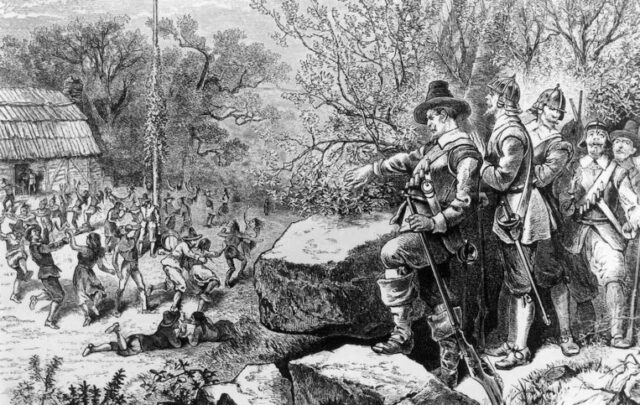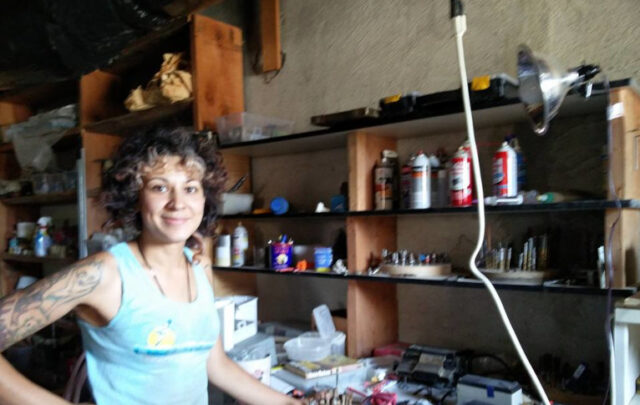He stands so tall and majestic, arms upraised despite age spots and peeling skin, I decide to name him. Arthur (as in King) is the most prominent of roughly a dozen ash trees that guard the undulating boundary between our grassy backyard and the untended woods beyond.
Arthur has four arms- burly waist-thick trunks that come out of a crotch barely above the ground- whose asymmetry gives him an open-shirted swagger.
Probably from being mowed when he was a chance seedling hidden in grass, I guess.
I see him waiting graciously off to the side, first thing every morning when I open the living room curtains, but it takes me several years to notice: that he is dying.
How had I missed it? Every spring he has been sporting fewer leaves, and they open later each season. Until one year he stands naked and pale against the greenery behind him. Lichens cling to his frail upper limbs, and the wind makes them rattle. I fear now for the elegantly extended branch that ends in a cupped hand, directly across from me at eye level. It sets the stage for avian drama– robins courting in spring, finches feuding through summer, raucous blue jays showing off in fall. One time a hawk eyes me so intently that I touch the thick glass in front of me for reassurance.
Relics embedded in Arthur’s flesh connect me to past humans: a rusting pair of horseshoes, remnants of a zip line, an eyebolt with a yard of clothesline. Arthur is the constant in this space through time, its genius loci. He defines this habitat – as character, anchor and setting. I picture him gone and feel distressed.
Here’s where reality smacks me: I’m a market gardener. I sell vegetables. What do I know about triaging a fifty-foot wildling? But even I, a horticultural novice, can see what’s plaguing Arthur. Parasitic vines: thick hairy leafy ropes of poison ivy, red-berried spiny bittersweet and sticky filaments I can’t identify. They emerge stealthily from the ground behind him and burrow up his shaggy bark like pulsing alien veins. Sucking the life out of him. Spiraling lines of stunted, withered shoots down each of his four arms tell me that he had tried to stay alive. He had fought the good fight.
At this point Arthur is clearly at an advanced stage of dead. He is shedding bark – the cambium layer nut-brown and bone-dry – when it should be green, sticky and flowing with sap. To stand under him is to court being whacked by falling kindling. And if he keels over onto my grass, he’ll make an expensive-to-remove carcass.
It’s this worrisome thought that spurs me to action.
I start by cutting away as many vines as I can reach, leaving the ends to dangle above my head. But freeing Arthur from his shackles is not easy, because he is not a freestanding tree. I can’t just walk around his trunk snipping.
If I were the upside down woodpecker hammering away at Arthur, I might discern a wedge shape in the short band of scrub that connects him back to the woods. It’s comprised of Japanese knotweed, a dense invasive bamboo look-alike whose stalks tilt this way and that, leafy arms extended like drunks on their way out of a pub. In the fall, an explosion of tiny white flowers weighs each leaf stem into a long nautical curve to the ground. Wind surfs through them in an unruly wave. It’s beautiful.
Clippers in hand I survey the beautiful hot mess swarming Arthur.
‘Better wait until winter,’ the guy who mows our yard advises me. ‘You don’t want ticks jumping out at you.’
He’s of course right. But my impatience at the thought of waiting makes me realize how habituated I have become to pressing buttons for a quick result. But there is no delete button for knotweed, no magic eraser. Wait I must for winter when the knotweeds lose their leaf cover and I too am freed up from garden work. Finally then I trim away the skeletal remains of knotweed until Arthur stands free of the woods.
He’s still dead.
Other trees, ensconced in the woods behind us, mock my efforts: ‘Look ma, no vines.’
And it’s true. Arthur- and all his fellow ash knights guarding the edge of the woods- are covered in clinging parasitic vines. While trees deeper in the woods seem to have smooth clean trunks. The parasites clearly prefer snaking along the ground near the edge of the woods until they find an exposed tree to jump on to.
This baffles me until I recall a bit of wisdom from a farmer friend: ‘Everything gotta eat.’
Now I get it. Poison ivy and its creepy cousins want to hitch a ride to the sun. They climb fences, telephone poles and cables; they hang in unruly masses from roadside trees, choking them into submission until they topple outwards. Nature’s minions blurring the lines of human control.
In this war of attrition Arthur is a pawn.
And I am on a mission to defend him. As I poke around his base pulling up the shallow clumping roots of knotweed, I finally see why they like living here. Knotweed grows in compacted soil, and the woods behind our house were used for dumping rocks when the lot was cleared. I haul out football-sized stones and marvel at Arthur’s survival, with his roots compressed into Ramen noodles. I pat them over with mulch.
It occurs to me that I’ve committed myself to watching his decaying back. In being literally out of the woods, Arthur is now dependent on me to stay upright.
I’ve domesticated a carcass. Rest in peace.
But Arthur gets the last word. Two seasons into our one-sided friendship, he shocks me by putting out new growth: a pair of gray-green sapling-slender shoots swelling with red velvet buds. They come out of the crotch just above root level, one last shot at life. I circle around, disbelieving, then imagine them becoming waist thick and fifty feet tall.
Arthur lives (it’s dorky and yet…magical)!





